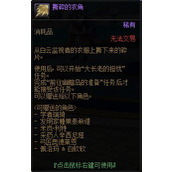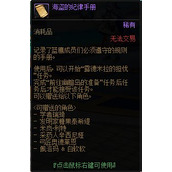Fluent MyBatis实现动态SQL代码示例
本篇文章小编给大家分享一下Fluent MyBatis实现动态SQL代码示例,文章代码介绍的很详细,小编觉得挺不错的,现在分享给大家供大家参考,有需要的小伙伴们可以来看看。
MyBatis 令人喜欢的一大特性就是动态 SQL。在使用 JDBC 的过程中, 根据条件进行 SQL 的拼接是很麻烦且很容易出错的, MyBatis虽然提供了动态拼装的能力,但这些写xml文件,也确实折磨开发。Fluent MyBatis提供了更贴合Java语言特质的,对程序员友好的Fluent拼装能力。
Fluent MyBatis动态SQL,写SQL更爽
数据准备
为了后面的演示, 创建了一个 Maven 项目 fluent-mybatis-dynamic, 创建了对应的数据库和表
DROP TABLE IF EXISTS `student`;
CREATE TABLE `student`
(
`id` bigint(21) unsigned NOT NULL AUTO_INCREMENT COMMENT '编号',
`name` varchar(20) DEFAULT NULL COMMENT '姓名',
`phone` varchar(20) DEFAULT NULL COMMENT '电话',
`email` varchar(50) DEFAULT NULL COMMENT '邮箱',
`gender` tinyint(2) DEFAULT NULL COMMENT '性别',
`locked` tinyint(2) DEFAULT NULL COMMENT '状态(0:正常,1:锁定)',
`gmt_created` datetime DEFAULT CURRENT_TIMESTAMP COMMENT '存入数据库的时间',
`gmt_modified` datetime DEFAULT CURRENT_TIMESTAMP ON UPDATE CURRENT_TIMESTAMP COMMENT '修改的时间',
`is_deleted` tinyint(2) DEFAULT 0,
PRIMARY KEY (`id`)
) ENGINE = InnoDB
DEFAULT CHARSET = utf8mb4
COLLATE = utf8mb4_0900_ai_ci COMMENT ='学生表';
代码生成
使用Fluent Mybatis代码生成器,生成对应的Entity文件
public class Generator {
static final String url = "jdbc:mysql://localhost:3306/fluent_mybatis?useSSL=false&useUnicode=true&characterEncoding=utf-8";
/**
* 生成代码的package路径
*/
static final String basePackage = "cn.org.fluent.mybatis.dynamic";
/**
* 使用 test/resource/init.sql文件自动初始化测试数据库
*/
@BeforeAll
static void runDbScript() {
DataSourceCreatorFactory.create("dataSource");
}
@Test
void test() {
FileGenerator.build(Nothing.class);
}
@Tables(
/** 数据库连接信息 **/
url = url, username = "root", password = "password",
/** Entity类parent package路径 **/
basePack = basePackage,
/** Entity代码源目录 **/
srcDir = "src/main/java",
/** 如果表定义记录创建,记录修改,逻辑删除字段 **/
gmtCreated = "gmt_created", gmtModified = "gmt_modified", logicDeleted = "is_deleted",
/** 需要生成文件的表 ( 表名称:对应的Entity名称 ) **/
tables = @Table(value = {"student"})
)
public static class Nothing {
}
}
编译项目,ok,下面我们开始动态SQL构造旅程
在 WHERE 条件中使用动态条件
在mybatis中,if 标签是大家最常使用的。在查询、删除、更新的时候结合 test 属性联合使用。
示例:根据输入的学生信息进行条件检索
当只输入用户名时, 使用用户名进行模糊检索;
当只输入性别时, 使用性别进行完全匹配
当用户名和性别都存在时, 用这两个条件进行查询匹配查询
mybatis动态 SQL写法
fluent mybatis动态写法
@Repository
public class StudentDaoImpl extends StudentBaseDao implements StudentDao {
/**
* 根据输入的学生信息进行条件检索
* 1. 当只输入用户名时, 使用用户名进行模糊检索;
* 2. 当只输入性别时, 使用性别进行完全匹配
* 3. 当用户名和性别都存在时, 用这两个条件进行查询匹配的用
*
* @param name 姓名,模糊匹配
* @param isMale 性别
* @return
*/
@Override
public List selectByNameOrEmail(String name, Boolean isMale) {
return super.defaultQuery()
.where.name().like(name, If::notBlank)
.and.gender().eq(isMale, If::notNull).end()
.execute(super::listEntity);
}
}
FluentMyBatis的实现方式至少有下面的好处
逻辑就在方法实现上,不需要额外维护xml,割裂开来
所有的编码通过IDE智能提示,没有字符串魔法值编码
编译检查,拼写错误能立即发现
测试
@SpringBootTest(classes = AppMain.class)
public class StudentDaoImplTest extends Test4J {
@Autowired
StudentDao studentDao;
@DisplayName("只有名字时的查询")
@Test
void selectByNameOrEmail_onlyName() {
studentDao.selectByNameOrEmail("明", null);
// 验证执行的sql语句
db.sqlList().wantFirstSql().eq("" +
"SELECT id, gmt_created, gmt_modified, is_deleted, email, gender, locked, name, phone " +
"FROM student " +
"WHERE name LIKE ?",
StringMode.SameAsSpace);
// 验证sql参数
db.sqlList().wantFirstPara().eqReflect(new Object[]{"%明%"});
}
@DisplayName("只有性别时的查询")
@Test
void selectByNameOrEmail_onlyGender() {
studentDao.selectByNameOrEmail(null, false);
// 验证执行的sql语句
db.sqlList().wantFirstSql().eq("" +
"SELECT id, gmt_created, gmt_modified, is_deleted, email, gender, locked, name, phone " +
"FROM student " +
"WHERE gender = ?",
StringMode.SameAsSpace);
// 验证sql参数
db.sqlList().wantFirstPara().eqReflect(new Object[]{false});
}
@DisplayName("姓名和性别同时存在的查询")
@Test
void selectByNameOrEmail_both() {
studentDao.selectByNameOrEmail("明", false);
// 验证执行的sql语句
db.sqlList().wantFirstSql().eq("" +
"SELECT id, gmt_created, gmt_modified, is_deleted, email, gender, locked, name, phone " +
"FROM student " +
"WHERE name LIKE ? " +
"AND gender = ?",
StringMode.SameAsSpace);
// 验证sql参数
db.sqlList().wantFirstPara().eqReflect(new Object[]{"%明%", false});
}
}
在 UPDATE 使用动态更新
只更新有变化的字段, 空值不更新
mybatis xml写法
update student where id = #{id,jdbcType=INTEGER} `name` = #{name,jdbcType=VARCHAR}, phone = #{phone,jdbcType=VARCHAR}, email = #{email,jdbcType=VARCHAR}, gender = #{gender,jdbcType=TINYINT}, gmt_modified = #{gmtModified,jdbcType=TIMESTAMP},
fluent mybatis实现
@Repository
public class StudentDaoImpl extends StudentBaseDao implements StudentDao {
/**
* 根据主键更新非空属性
*
* @param student
* @return
*/
@Override
public int updateByPrimaryKeySelective(StudentEntity student) {
return super.defaultUpdater()
.update.name().is(student.getName(), If::notBlank)
.set.phone().is(student.getPhone(), If::notBlank)
.set.email().is(student.getEmail(), If::notBlank)
.set.gender().is(student.getGender(), If::notNull)
.end()
.where.id().eq(student.getId()).end()
.execute(super::updateBy);
}
}
测试
@SpringBootTest(classes = AppMain.class)
public class StudentDaoImplTest extends Test4J {
@Autowired
StudentDao studentDao;
@Test
void updateByPrimaryKeySelective() {
StudentEntity student = new StudentEntity()
.setId(1L)
.setName("test")
.setPhone("13866668888");
studentDao.updateByPrimaryKeySelective(student);
// 验证执行的sql语句
db.sqlList().wantFirstSql().eq("" +
"UPDATE student " +
"SET gmt_modified = now(), " +
"name = ?, " +
"phone = ? " +
"WHERE id = ?",
StringMode.SameAsSpace);
// 验证sql参数
db.sqlList().wantFirstPara().eqReflect(new Object[]{"test", "13866668888", 1L});
}
}
choose 标签
在mybatis中choose when otherwise 标签可以帮我们实现 if else 的逻辑。
查询条件,假设 name 具有唯一性, 查询一个学生
当 id 有值时, 使用 id 进行查询;
当 id 没有值时, 使用 name 进行查询;
否则返回空
mybatis xml实现
fluent mybatis实现方式
@Repository
public class StudentDaoImpl extends StudentBaseDao implements StudentDao {
/**
* 1. 当 id 有值时, 使用 id 进行查询;
* 2. 当 id 没有值时, 使用 name 进行查询;
* 3. 否则返回空
*/
@Override
public StudentEntity selectByIdOrName(StudentEntity student) {
return super.defaultQuery()
.where.id().eq(student.getId(), If::notNull)
.and.name().eq(student.getName(), name -> isNull(student.getId()) && notBlank(name))
.and.apply("1=2", () -> isNull(student.getId()) && isBlank(student.getName()))
.end()
.execute(super::findOne).orElse(null);
}
}
测试
@SpringBootTest(classes = AppMain.class)
public class StudentDaoImplTest extends Test4J {
@Autowired
StudentDao studentDao;
@DisplayName("有 ID 则根据 ID 获取")
@Test
void selectByIdOrName_byId() {
StudentEntity student = new StudentEntity();
student.setName("小飞机");
student.setId(1L);
StudentEntity result = studentDao.selectByIdOrName(student);
// 验证执行的sql语句
db.sqlList().wantFirstSql().eq("" +
"SELECT id, gmt_created, gmt_modified, is_deleted, email, gender, locked, name, phone " +
"FROM student " +
"WHERE id = ?",
StringMode.SameAsSpace);
// 验证sql参数
db.sqlList().wantFirstPara().eqReflect(new Object[]{1L});
}
@DisplayName("没有 ID 则根据 name 获取")
@Test
void selectByIdOrName_byName() {
StudentEntity student = new StudentEntity();
student.setName("小飞机");
student.setId(null);
StudentEntity result = studentDao.selectByIdOrName(student);
// 验证执行的sql语句
db.sqlList().wantFirstSql().eq("" +
"SELECT id, gmt_created, gmt_modified, is_deleted, email, gender, locked, name, phone " +
"FROM student " +
"WHERE name = ?",
StringMode.SameAsSpace);
// 验证sql参数
db.sqlList().wantFirstPara().eqReflect(new Object[]{"小飞机"});
}
@DisplayName("没有 ID 和 name, 返回 null")
@Test
void selectByIdOrName_null() {
StudentEntity student = new StudentEntity();
StudentEntity result = studentDao.selectByIdOrName(student);
// 验证执行的sql语句
db.sqlList().wantFirstSql().eq("" +
"SELECT id, gmt_created, gmt_modified, is_deleted, email, gender, locked, name, phone " +
"FROM student " +
"WHERE 1=2",
StringMode.SameAsSpace);
// 验证sql参数
db.sqlList().wantFirstPara().eqReflect(new Object[]{});
}
} 














